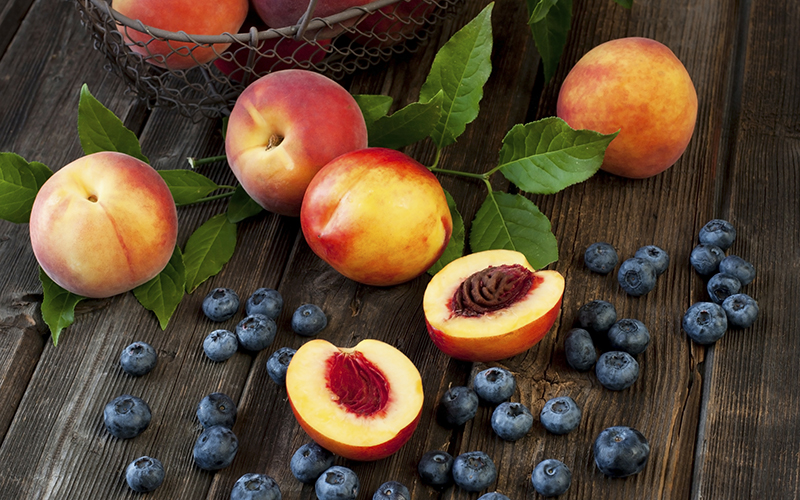
by guest blogger Toni Becker, member of the Rodale’s editorial team
Looking for a cleaner, more sustainable diet? Start by eating seasonally.
In today’s world of mass production and far-flung distribution, the seasons blend together. Fruits and veggies that used to be available just once a year can now be found 365 days a year. But just because you can eat blueberries in January doesn’t mean you should.
Besides being more flavorful than their off-season counterparts, in-season fruits and veggies can also be more nutritious. Experts say fruits like strawberries and blueberries can lose vital nutrients, such as vitamin C, during shipment.
Traveling great distances to get to your table also adds to produce’s price tag and carbon footprint. When you eat in-season delights, you can grow your own or buy locally, and either option is usually more affordable and better for your community.
Eating seasonally also increases transparency. There are no preservatives or extra chemicals needed to keep the produce fresh, and if you grow it yourself or have access to the farmer who grew your food, you can be sure that what you’re eating is clean.
As we head into prime growing season, many delights become available in spring. It’s an excellent time of year to discover new vegetables and enjoy several superfoods. The fruits and vegetables in this comprehensive list can be found through May. You can spice up ordinary pasta dishes with these flavorful recipes.
To find out what’s in season each month for your region, check out the Sustainable Table Food Guide.
Some highlights into early June include:
April
Asparagus, artichokes, beets, chard, herbs, mint, mushrooms, onions, pea shoots, parsnips, and spinach. Unusual offerings include fiddleheads, nettles, and ramps.
May
Arugula, fava beans, garlic scapes, kale, lettuce, peas, radishes, rhubarb, plums, scallions, and later in the month, strawberries. Warmer states will begin to harvest blueberries, cantaloupe, peaches, and tomatoes.
Early June
Broccoli, carrots, cauliflower, cherries, and corn. Blueberries become available in more states, and strawberries are at their peak. For Southern states, beans, okra, and peppers.
 Toni Becker is a part-time content creator at Rodale’s. She is also the personal chef, event planner, chauffeur, and best of all playmate to her young daughter. Her family of three lives in the woods where she finds time to write, cook anything she can from scratch, garden, and build her case of why she needs goats.
Toni Becker is a part-time content creator at Rodale’s. She is also the personal chef, event planner, chauffeur, and best of all playmate to her young daughter. Her family of three lives in the woods where she finds time to write, cook anything she can from scratch, garden, and build her case of why she needs goats.




A great cookbook that is seasonal is “Simply In Season,” by Mary Beth Lind and Cathleen Hockman-Wert published by Herald Press of Waterloo, Ontario/ Scottsdale Pennsylvania and available at Ten Thousand Villages Stores. This book was commissioned by the Mennonite Central Committee to promote the understanding of how the food choices we make affect our lives and the lives of those who produce food.
And don’t forget Spring foraging too — “Bishops’ Weed” (non-variegated variety) and yes you can eat it if picked early enough. It tastes celery-like. And, of course dandelion greens (my favorite) — but all must be picked early, early Spring – and dandelions before they flower.